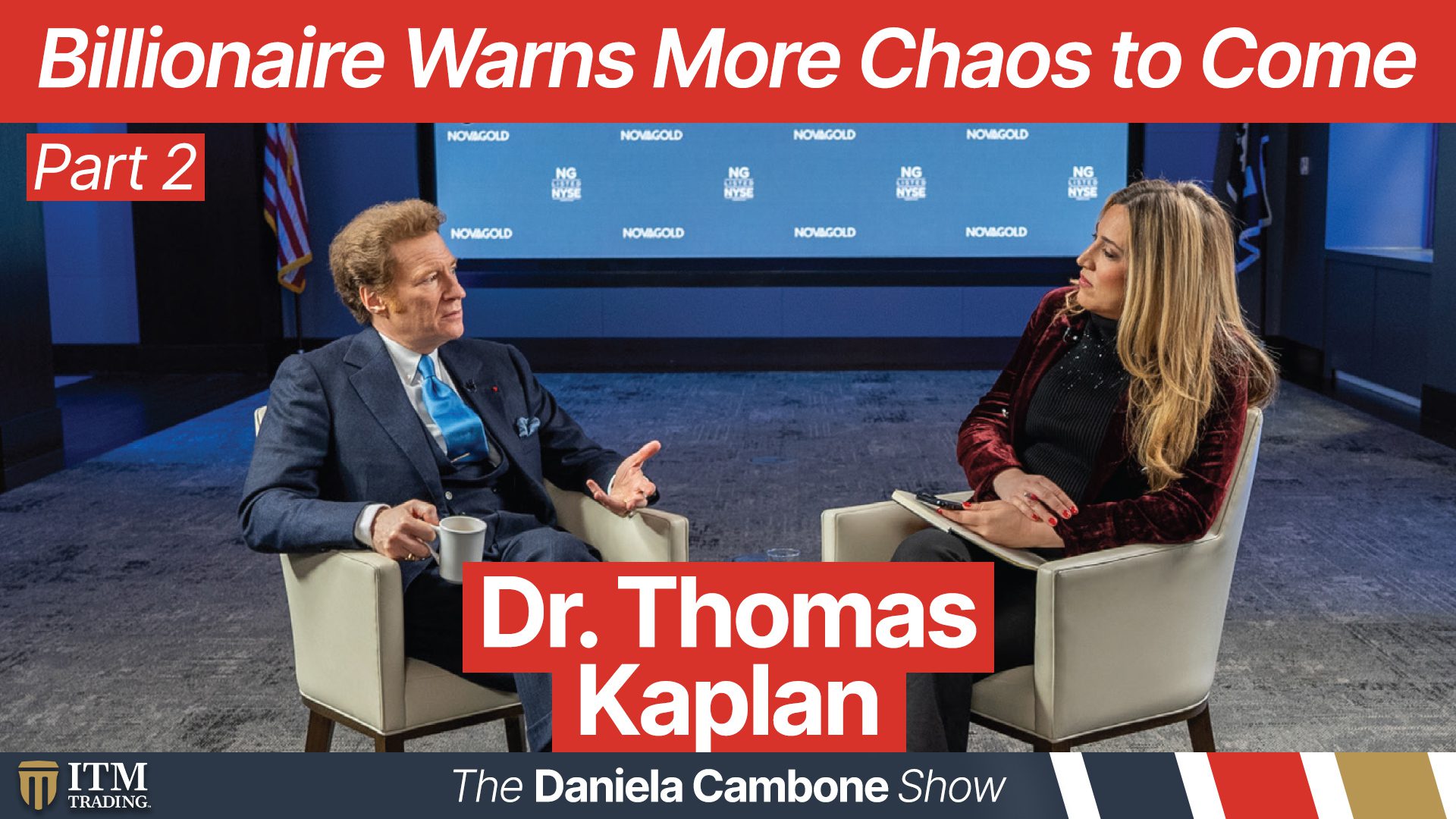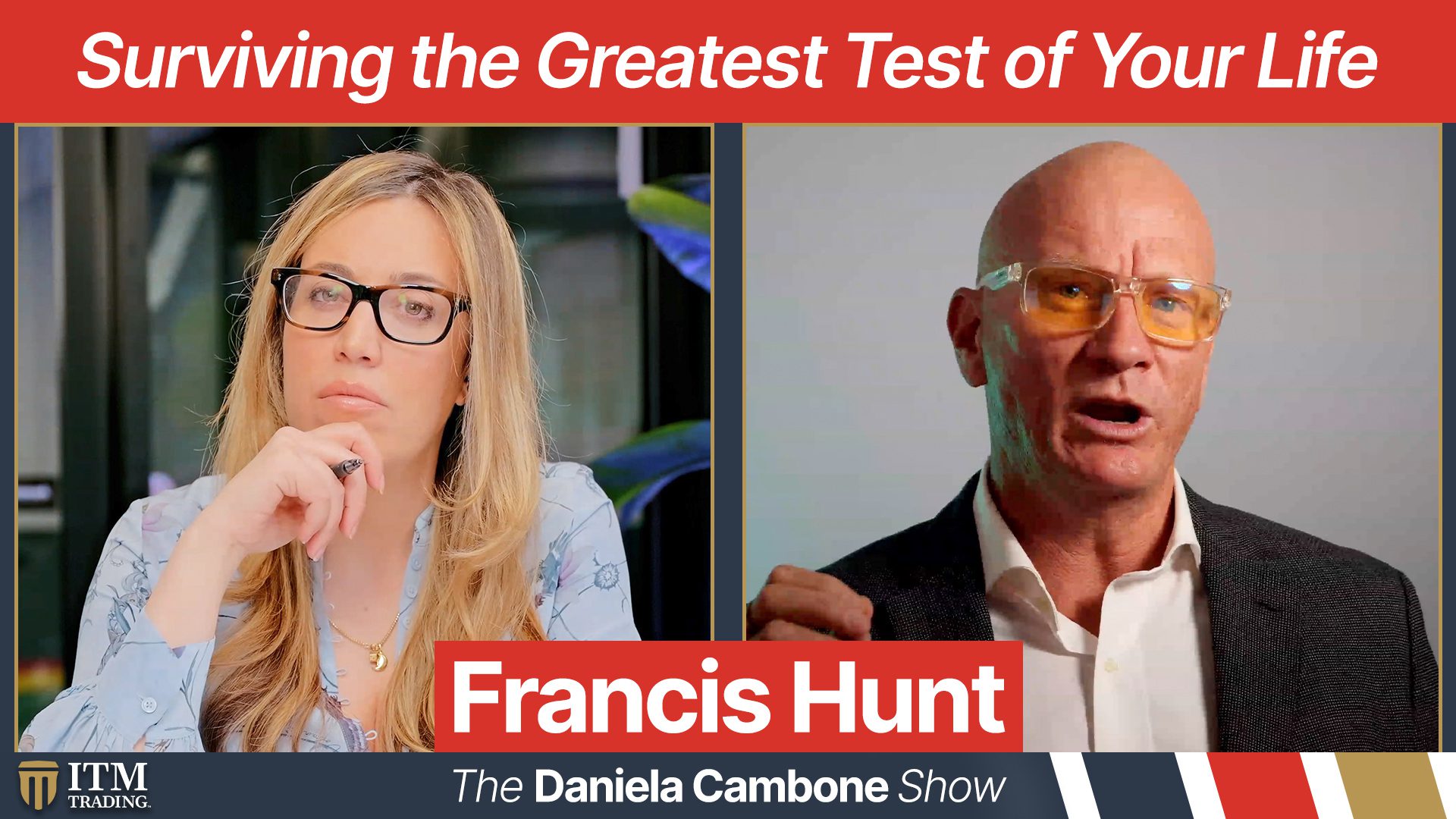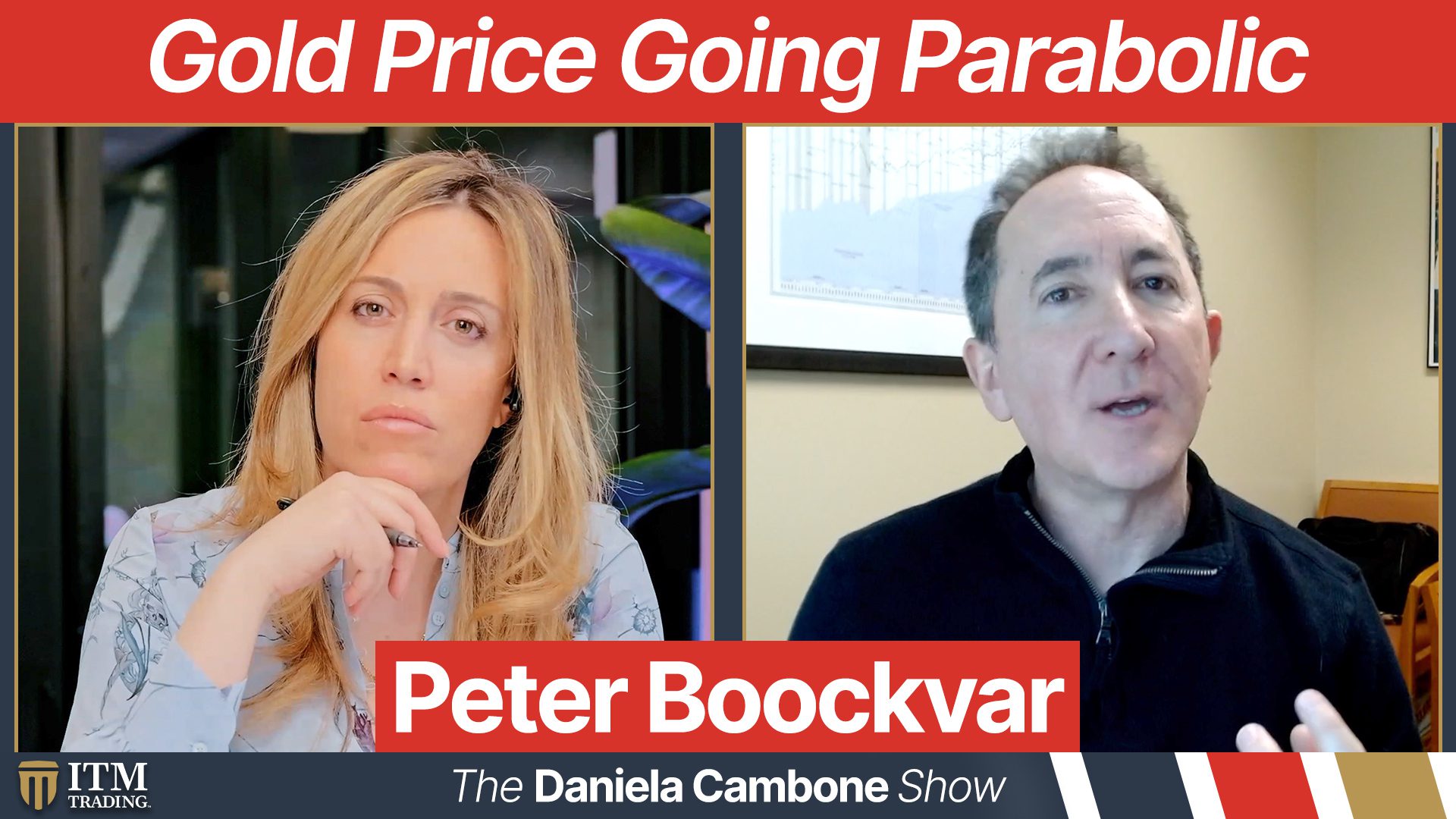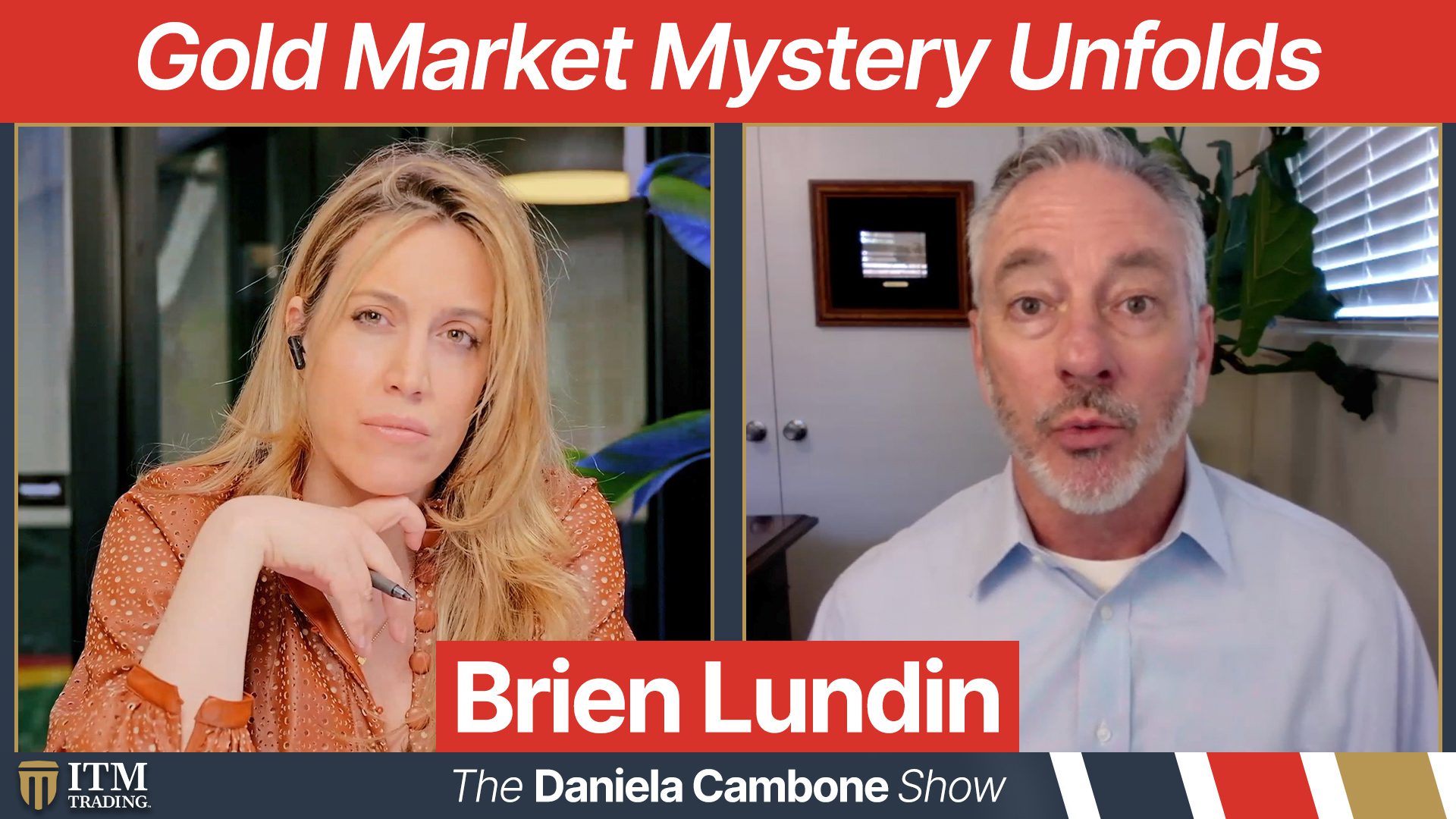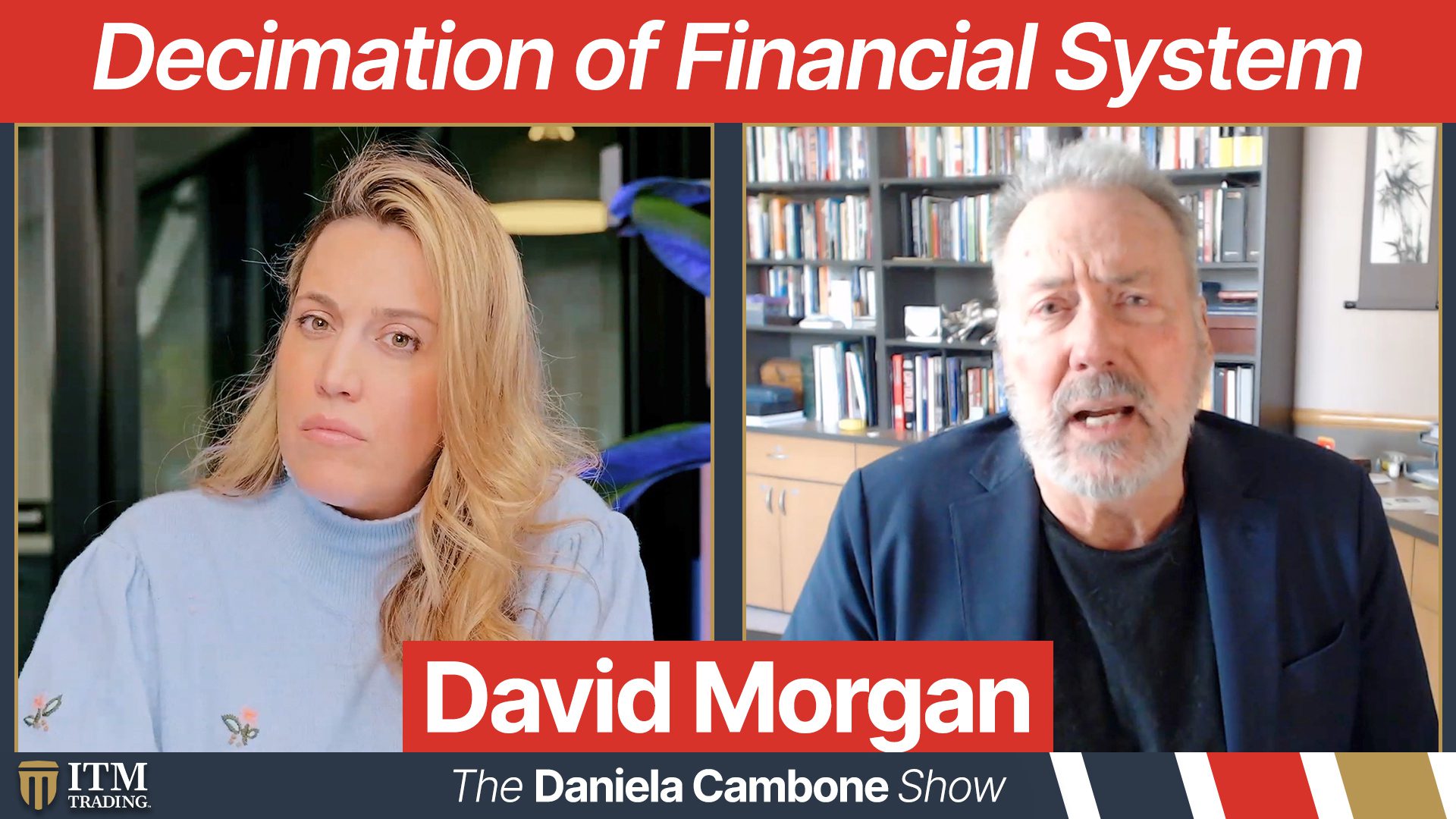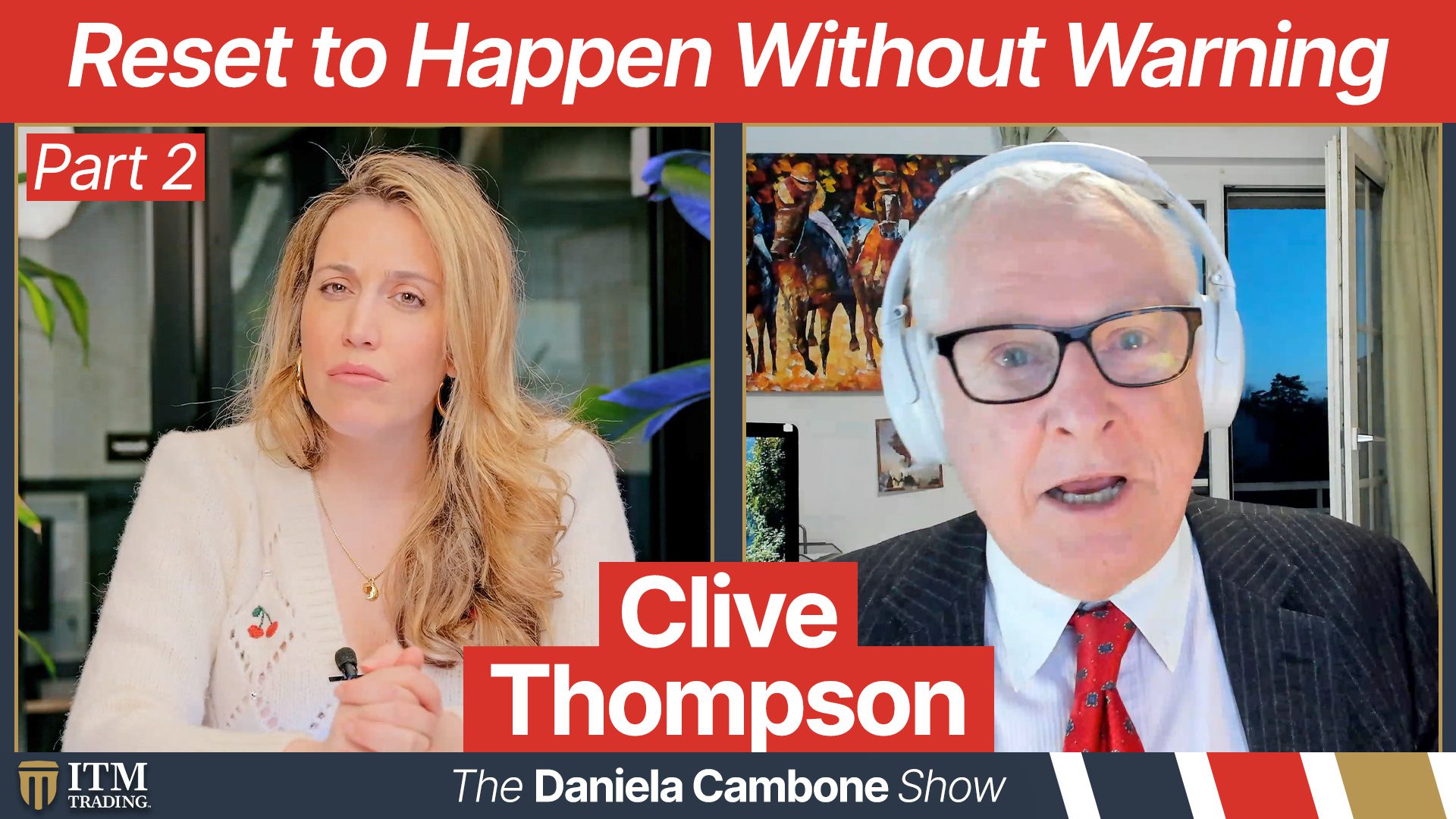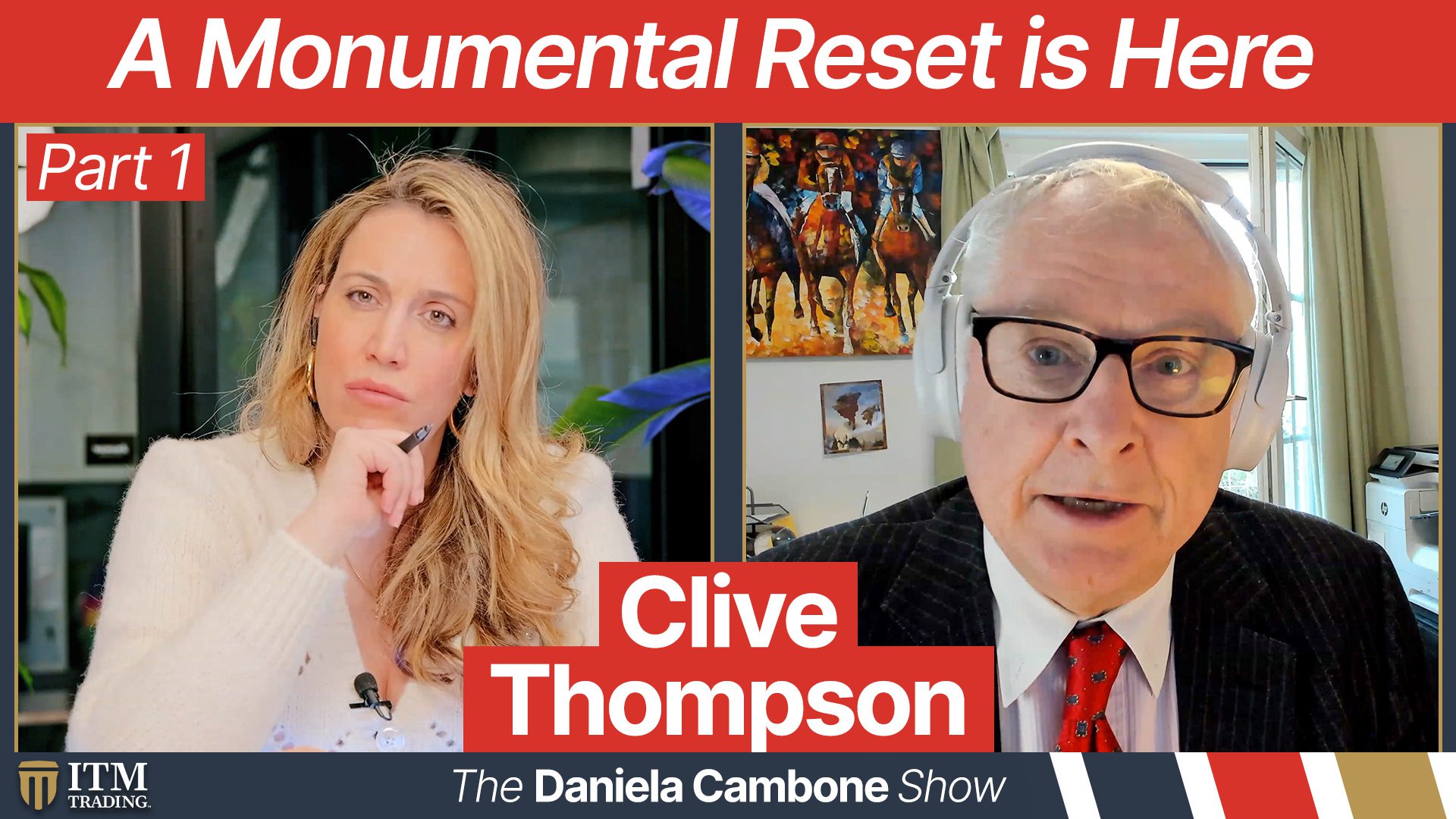“Creating a Crisis” To Avoid a Global Financial Meltdown?
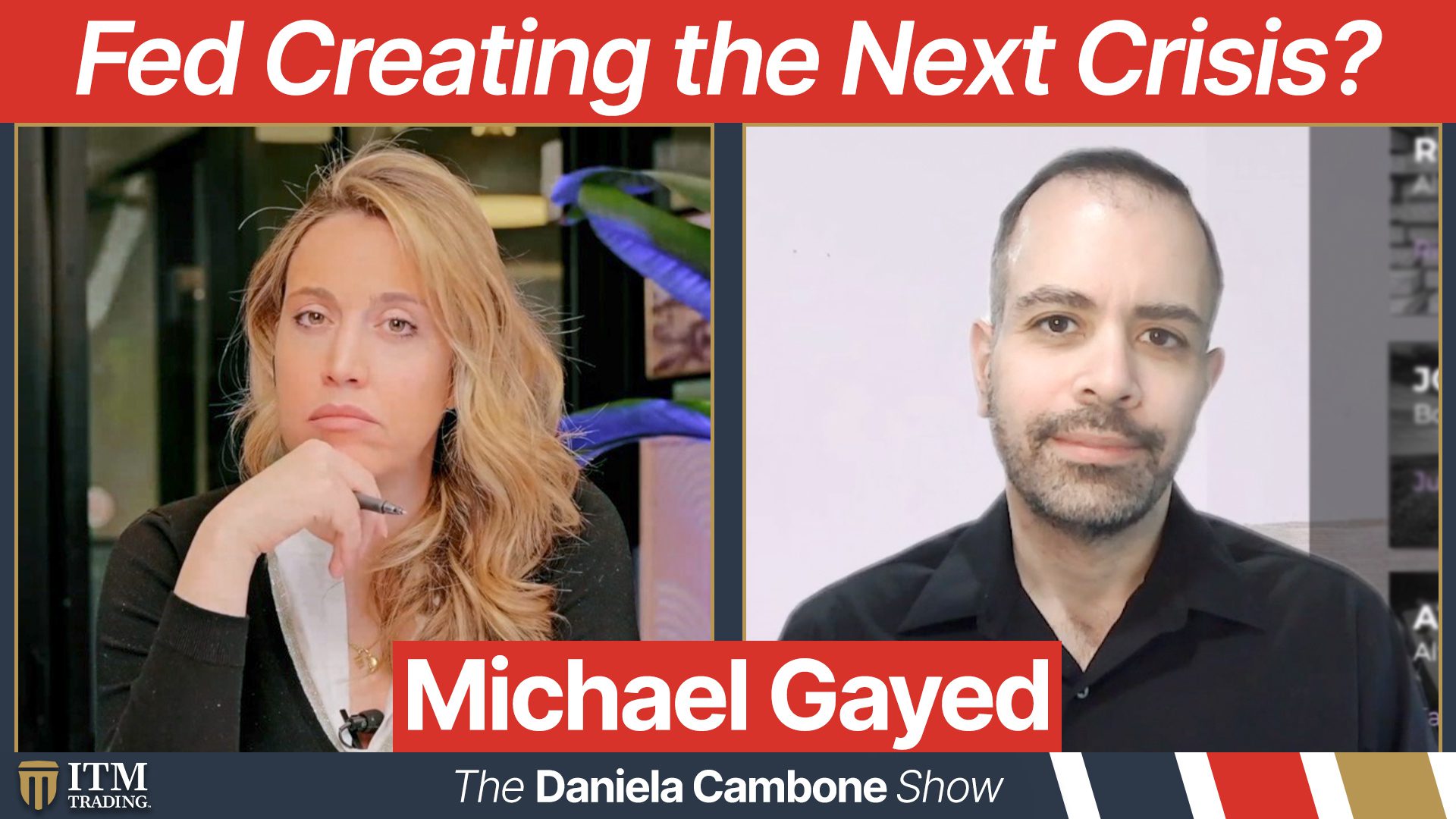
Join Daniela Cambone for an insightful conversation with Michael Gayed, publisher of the LeadLag Report, as he discusses his concerns about the Federal Reserve’s actions and the potential risks to the stock market. He highlights the role of the Bank of Japan and its impact on global financial markets, emphasizing that the appreciation of the Japanese yen relative to the dollar could trigger a butterfly effect. Furthermore, Gayed delves into the concept of a credit event and the potential for a market crash. He advises strategic investors to consider reducing exposure to large-cap stocks and growth investments, suggesting a shift towards defensive sectors and assets such as utilities, treasuries, and gold.
CHAPTERS:
0:00 Fed meeting
3:33 BOJ
5:56 Credit event
7:36 Election year
9:51 Stock market crash
12:37 Best investment strategies
14:36 How big is the crash
16:28 General advice
18:02 FOMO
20:11 Concluding words
TRANSCRIPT FROM VIDEO:
Daniela Cambone (00:04.266)
Happy Monday. Welcome back to the Daniela Cambone Show now on ITM Trading. Well, my guest today says, look folks, I’m not a doomer. I’m not a perma bearer. I’m just a realist. And he’s afraid that the Fed may be repeating the mistakes of the 1970s and risking great damage to the market. We’re going to find out why. Please welcome to the show, Michael Gayed. He’s the publisher of the LeadLag Report. Michael, thank you so much for joining me this Monday.
Michael A. Gayed, CFA (@leadlagreport) (00:34.313)
I think the last time I was on your show, I was maybe like 40 pounds heavier. So let me reintroduce myself, yes.
Daniela Cambone (00:38.902)
I wanted to say. What, how’d you, what was your secret? What’d you do?
Michael A. Gayed, CFA (@leadlagreport) (00:46.669)
I got really big into fasting. So I’ve been public about it on X, but really started around July doing intermittent fasting, one meal a day, several, four or five days of no eating, just water and coffee. I’m pretty much in the best health and shape of my life, right, and doing this kind of at an older stage of my life. But, you know, it’s, in markets, you can’t control the value of your portfolio, but you can at least control your health. And part of that is the impetus for why I went on this journey.
Daniela Cambone (00:58.943)
Wow.
Daniela Cambone (01:14.602)
Wow. Well, congratulations on that. And I’m glad, I’m glad you’re feeling better, but that doesn’t change your prognosis for the, for the stock market. We’re going to talk that, but first let’s get your latest on the Fed. Obviously we’re speaking ahead of the much anticipated meeting this week. But you say, look, the fed’s got to get its act together or the 1970s may be back to haunt us. How so?
Michael A. Gayed, CFA (@leadlagreport) (01:40.913)
Yeah, the most important Fed meeting until the next one, I think is the way to say it. So look, I’ve said before, I think the Fed probably over tightened, but I said that before November, when they suddenly got the market to massively reinflate between Powell getting the market to think that six cuts were coming, and then Yellen doing her six save with the Treasury.
Daniela Cambone (01:46.157)
Right.
Michael A. Gayed, CFA (@leadlagreport) (02:06.929)
causing credit spreads to completely collapse and causing a flood of liquidity back into risk assets. The Fed made a big mistake in my view, November, December, in terms of the wording which created this huge run-up, which largely is being driven again just by large gaps, continuation of this distorted market I’ve been pointing out for the last year or so. Now, the mistake I think here is very clear, which is that the Fed has to be really careful. Okay, if they keep on allowing
Daniela Cambone (02:16.159)
Right.
Michael A. Gayed, CFA (@leadlagreport) (02:36.933)
the market to run away. And by the market, I’m just saying the S&P 500, even though I don’t think that’s the true market anymore, we can touch on that. Then the issue is that creates a wealth effect, that creates inflationary pressure, that creates the second wave of inflation, which a lot of people that will look at the 70s will say was sort of the path that we are most likely paralleling at this point. They can cut back on liquidity with words, right? They can basically try to take off the table the idea that they cut rates at all.
And they can also, I think, maybe give a nod to other central banks, namely the Bank of Japan, potentially being a source of liquidity coming out of global financial markets. And I know we’re very focused on the Fed. I think the BOJ is far more consequential. Bank of Japan is far more consequential because if there is another risk of inflation, the only way to break that risk of inflation is with some real scare. And a real scare would probably come from the currency side.
Daniela Cambone (03:35.326)
So, okay, so two points there. Well, wait a second, on the Bank of Japan, that’s a good point, Michael, because a lot of people will say, well, how does that, you know, if I’m living in the US or Canada or North America, how does what’s happening there eventually affect me?
Michael A. Gayed, CFA (@leadlagreport) (03:50.545)
So I’ve brought up this idea before that this was sort of in my view, the real catalyst for what could inevitably, I think inevitably at least, spark a credit event, which is just another fancy way of saying a VIX spike and tail event in risk assets, which I thought would happen towards the end of the year. Entering November, the risk was there, obviously didn’t happen, but the fact that the Fed stepped in with their words suggests that they were worried about something happening towards the end of last year. But there is this thing called the carry trade. Essentially the idea is that because
Daniela Cambone (04:16.372)
Yeah.
Michael A. Gayed, CFA (@leadlagreport) (04:19.885)
rates have been negative and zero really for a long time for Japan. A lot of cheap leverage has come from Japan’s markets and gone into other riskier parts of the globe. If you were to look at the yen’s correlation to the NASDAQ, it’s pretty high. I don’t think that’s a coincidence. So Japan has been a source of liquidity for risk seeking behavior. Now they have a real inflation problem. Okay. And people forget that Japan imports pretty much all of its oil.
So if we’re worried about oil prices rising again, and the yen keeps on free falling, that means oil denominated in yen goes through the roof. You talk about a significant inflationary pressure source for a country and for a population that doesn’t know anything about inflation for the last three decades. Bank of Japan has to now act to try to at least prevent that or slow that possibility from happening, which means they have to save the yen. They have to cause the yen to appreciate relative to the dollar.
Historically, when that happens, that’s a risk off type of trade. Historically, when the yen rises, all of that cheap money that was borrowed from Japan comes back to Japan because now the yen is hurting those returns from those borrowers of that capital. That then creates sort of this, what I call Mothra effect, which is a play on the butterfly effect, but using the Godzilla analogy, where it creates all kinds of ripples in global financial markets.
I think the Bank of Japan is going to be far more important because far more liquidity now is being driven by them and has been driven by the BOJ than the Fed. And it is a major policy shift that’s coming.
Daniela Cambone (05:56.246)
So the Bank of Japan is the start of the butterfly effect.
Michael A. Gayed, CFA (@leadlagreport) (06:01.838)
I think so, yeah.
Daniela Cambone (06:03.462)
Um, going back to your point about this major, that it will take some credit event too. It’s the only way out. You say it’s, you know, it won’t be long, but it will be painful. Um, but are you talking complete bankruptcy? I mean, what, what does the credit event look like for you?
Michael A. Gayed, CFA (@leadlagreport) (06:25.469)
Okay, so credit event just means credit spreads widening, which means default risk is getting repriced into credit, right? Into junk debt, into triple B, corporate credit. No one had on their bingo cards that following the fastest rate hike cycle in history, credit spreads would be at cycle lows, while bankruptcies are actually increasing in the private economy. There is a massive divergence and disconnect that’s happening between what the bond market is saying about credit risk and what is actually happening in terms of bankruptcies. There’s a massive disconnect
in terms of what small caps are saying versus what large caps are saying because of the very same concerns around credit risk because a lot of companies have high leverage when they’re smaller, have razor thin margins, and there’s concerns that as they roll over their debt, these small cap companies, they may not survive. So it seems clear to me that the Fed can’t bring inflation down to 2% without some kind of a shock, right? Which is really what a credit event is. Every single VIX spike, every single spread widening event.
is inherently disinflationary and maybe for a moment in time, deflationary. You need to have the market be the source of taking that inflation out of the system, right? Which is a whole, by the way, that’s the whole concept of the Fed keeps raising rates until something breaks. Something breaks is credit spreads.
Daniela Cambone (07:41.414)
and you say it will take a spike in the CBOE, sorry, volatility index and pain, you say the market must do it for the Fed now. But are they going to have that pain in an election year? I would think not, Michael.
because they don’t want to be blamed if the election goes one way or another.
Michael A. Gayed, CFA (@leadlagreport) (08:03.293)
There’s a couple of things there. And to be clear, I’m not some, I’m not a perma bear by any means or a doomer. I mean, I’ve said meltup in October of 2022. I said last year would be meltup year with a risk of a cut event towards the end of the year. So just before anybody starts saying, oh, here’s another perma bear that’s just talking negative, it’s not true folks, like at all. I’m just trying to look at these different intermarket dynamics and trying to make sense of what the market itself is saying beneath the surface. So a couple of things. First of all, I think if you have this reverse carry trade dynamic, that gives the Fed an excuse.
Daniela Cambone (08:23.944)
Mm-hmm.
Michael A. Gayed, CFA (@leadlagreport) (08:33.357)
right, to try to cut rates in advance of the election. Because now you’ve got a scapegoat, right? The Fed is now intervening to save global financial markets, to squash volatility because of what the Bank of Japan is doing in terms of its monetary policy. Now, keep in mind though, and I don’t know the exact numbers, but it is my sense that whatever the Fed has done in terms of quantitative tightening in a month is what, like a day of Nvidia’s market cap appreciating.
Daniela Cambone (08:44.404)
Right?
Michael A. Gayed, CFA (@leadlagreport) (09:01.233)
Like can the Fed really control the market when these numbers are that big and moving around this violently? And I always go back to, a lot of people say in election years, okay, well, okay, that’s true. And I know there’s other circumstances, but people forget it’s like the year 2000 was an election year. 2008 was an election year. 2020 was an election year. These are all years where you had some pretty sizable drops. Right, so I don’t know. I am skeptical of the narrative that the Fed can really…
Daniela Cambone (09:07.334)
I don’t think so.
Michael A. Gayed, CFA (@leadlagreport) (09:30.969)
fully controlled market dynamics and that even if they could, they would because maybe the best and easiest way to get reelected is to create a crisis and then say we saved it just before you got to the voting booth.
Daniela Cambone (09:45.163)
Ah, oh no, now you’re opening Pandora’s box, Michael.
Michael A. Gayed, CFA (@leadlagreport) (09:48.165)
I’m just saying, it’s not a conspiracy theory, but it’s like if you’re gonna go down the conspiracy theory route, it’s like, better have a crisis earlier than later.
Daniela Cambone (09:52.092)
Yeah.
Daniela Cambone (09:55.442)
a huge financial crisis. Well, uh, let’s talk more about, uh, why you think it’s looking like a perfect setup for, uh, incoming stock market crash. Um, you’re looking at the rising price of gold, you still utility stocks, and long-term treasury bonds as major flashing points for you, right?
Michael A. Gayed, CFA (@leadlagreport) (10:18.093)
Yeah, and also just again, the fact that small caps, you know, keep lagging this badly. It’s like I really am blown away. You know, micro caps and small caps in a real bull market, you want the most illiquid stuff, right? Rising tide lifts all boats. And those parts of the marketplace, which are the vast majority of the number of stocks are still below the 2021 highs. This is fact. By the way, that’s not me suggesting to short large caps, but it’s something you got to keep in the back of your mind. I’m actually very against shorting, very against puts. I make that a point repeatedly on social media.
So you can be bearish and long, but be long defensive areas like utilities, like treasuries, like gold, which are not only plays on volatility, but also are leading indicators for volatility. Look, why does gold historically do well or have these periods of momentum? Like we’re seeing now where it’s trying to break out or in a sustained way it looks like. These golds are non-correlated asset and you can be non-correlated and long only. So if you’re worried about correlation, if big money is worried about equities,
They want less beta. They want less correlation. They still have to be invested. Gold is one of those options for them to be long and be less correlated or non-correlated equities. Treasuries are an interesting trade. And I am biased in saying this because my funds live in that world in terms of treasuries as the risk off option. Why the last three years have been among most painful in my career because of the cycle that we’ve seen in treasuries. But treasuries need credit spreads to widen. The whole flight to safety, flight to quality dynamic.
happens when suddenly lenders of capital are getting worried that junk debt issuers are not gonna pay back their loans. So they move up the credit quality scale to, from CCC to BBB to AAA, ultimately the US government treasuries, for a moment in time, because the US government can’t go broke because it’s got a printer, right? And then utilities, the most defensive sector of the stock market, if you were to look at technology as a sector relative to utilities, so you take the most offensive sector, technology, divided by the most bond-like defensive sector, utilities,
You’re pretty much at March 2000 levels in terms of that relative spread of these two sectors against each other. Now, maybe it gets more extreme and obviously tech momentum persists, but we are getting to a point where nobody’s prepared for some kind of an event, some kind of a tail risk, some kind of volatility. I don’t know when it hits. I know that the more stretched that it gets, the more vicious the muniversion will be.
Daniela Cambone (12:40.106)
So, so to sum up for, we have strategic investors is what I call them watching the show. What for you are the best plays right now? I mean, I’m assuming you’re not shorting US equities. So you’re not in US equities at all.
Michael A. Gayed, CFA (@leadlagreport) (12:55.633)
No, so my strategies are very tactical, so they can be a risk on risk off. They happen to be, Roro and Joe, you have to be a risk off. I mean, that’s public information right now in treasuries. That can change weekly, but right now the signals are there. I think that will likely persist because of just how stretched the signals are in terms of suggesting persistent outperformance of defensiveness. But I think if you’re gonna be a strategic investor, look, I always go back to this point that the biggest returns don’t come from the middle of the trend. The biggest returns come from the turn of the trend.
Daniela Cambone (13:13.802)
Mm-hmm.
Michael A. Gayed, CFA (@leadlagreport) (13:25.405)
It’s like, that’s the joke about momentum. You need momentum for there to be momentum, which means of course you’re missing some of the initial compounding of momentum, which is the bulk of the returns. So I think if you’re gonna be strategic here, yes, you know what? You wanna be long, large cash because it’s still working. God bless, go ahead. It’s obviously still working. Obviously you can still make a ton of money with these AI plays and this concentration dynamic that is getting people so bold up. But momentum tends to have crashes.
It’s a well-known dynamic. It’s very well documented. It’s called a literal momentum crash in the factor. So if you’re gonna position, I think you probably wanna reduce from a strategic asset allocation perspective, reduce your large cap exposure, reduce your growth exposure, probably go more value, probably go more defensive sectors, utilities, staples, healthcare, tilt there, probably go more treasuries and not really bet on credit spreads staying this tight. Even if you’re wrong in playing defense,
Daniela Cambone (14:03.062)
Mm-hmm.
Michael A. Gayed, CFA (@leadlagreport) (14:22.309)
you’re not necessarily gonna lose money because you’re still long. You might be up less, but in the event that things do turn sour, in the event that my whole thesis around a credit event pans out to be right after all, despite my timing being off towards the end of last year, why not get ahead of that?
Daniela Cambone (14:40.838)
And I know I’m going to get the comments. Well, how big of a crash could you anticipate? Are you anticipating? And what kind of timeline are you looking at for this to happen?
Michael A. Gayed, CFA (@leadlagreport) (14:53.361)
So again, credit event is a fancier term for saying that. At the end of 2022, I put a post on X saying, stocks didn’t bottom, the flight to safety trade bottomed. And people will look at that and say, what are you talking about? Stocks of course bottomed. No, they didn’t in 2022, because people forget that in October of 2023, last year, entering November, small caps.
Russell 2000 broke the lows of October 2022. Micro caps were actually entering 2020 levels. Right, there was a complete breaking of the floor in the vast majority of stocks. Now, I don’t know how severe a major decline could be. Nobody can tell the magnitude. But could you see small caps and micro caps which are most sensitive to rates break down, not making you highs and actually make new lows like they were doing last year?
Sure. Could the S&P give back a substantial amount of its gains? Sure. I don’t know how much, given how insane this move has been, again, largely driven by a select number of these AI large cap tech names. But, you know, look, people are so sensitive to markets going out five, 10, 15%, these are very normal. What’s not normal is the overconfidence, not being a tell that you’re about to turn.
Daniela Cambone (16:02.336)
Right.
Michael A. Gayed, CFA (@leadlagreport) (16:17.945)
Right. And I think we are at a point, I’ve made this point before every single major top, every single major bottom for markets has the same thing in common, which is overconfidence. And I’m telling you right now I can see it everywhere when it comes to the bull narrative.
Daniela Cambone (16:33.867)
Lots of good thoughts. Michael, I mean, there’s a lot to navigate. You know, I mean, it’s almost, it’s overwhelming for a lot of people watching at home. I mean, what would be your general advice to them?
Michael A. Gayed, CFA (@leadlagreport) (16:50.885)
Yeah, it’s overwhelming and nasty for everybody, which sounds weird, right? It’s like, oh, how could you say that? The S&P is doing well, everybody’s printing money. Because look, you can only beat the S&P 500. You can only beat the market by choosing another market. Right, it’s like asset allocation 101. Right, so in my case, where are my funds, right? Risk on for our mutual funds, emerging markets, small caps, death by a thousand cuts for the last decade. In the case of Roro, it’s small caps, large growth, small caps, same deal, when risk on. Treasury is when the risk off, hasn’t worked.
The worst environment is actually the environment that we’re in now, because what’s the implication of a world where it’s only about the S&P 500? Everybody just goes into that one proxy, which means everybody just has the same exposure to the same 10 stocks, to the same idiosyncratic risk, which is really risky if you’re gonna be somebody that’s entering retirement and it’s like, well, I gotta go into that because everything else is sucking wind. So, my biggest, if I’m gonna give advice to anybody,
Daniela Cambone (17:34.634)
Right.
Michael A. Gayed, CFA (@leadlagreport) (17:47.537)
My biggest piece of advice is don’t let FOMO take over your life. These cycles change. There’s no gurus only cycles, these cycles change. This happens to be a really nasty cycle because the worst environment in the world is one which is pure risk on, pure large caps because anything you do outside of that doesn’t work and it results in over concentration in a portfolio, independent of risk tolerance, and at some point that turns badly.
Daniela Cambone (18:11.25)
Let’s talk a little bit more about FOMO here, because I know you’ve been taking a lot of heat for your views on the cryptocurrencies on Twitter, but it’s almost like people aren’t really understanding what you’re saying, because I’ve read in past tweets where you’ve said you just don’t see Bitcoin, for example, as a store of value, but it can be part of an investment strategy. But let’s talk about.
the FOMO we’re seeing back in cryptocurrencies again, with folks afraid that they’ve missed a Bitcoin bandwagon. What do you tell these people?
Michael A. Gayed, CFA (@leadlagreport) (18:49.885)
You’re always gonna miss a move. Like up and down. I mean, that’s okay. I have to tell you, I said that kind of randomly last night, I said, or the day before, you’ve won the argument when people give you a counter argument that has nothing to do with your original argument. And this is more of like a personal issue for me, right? Like I have a problem with how society is changing definitions of things, right?
it’s not a political belief. It’s just I think that you society breaks down when you can’t agree on definitions. You can’t even communicate if you don’t have definitions, you can’t have a logical conversation unless you have proper definitions. So whenever cryptocurrencies are and Bitcoin, I’ll separate the two are both up are big or down big, I will say store value on X under at least Lagerport. And then I get all the people coming at me saying, Oh, it’s stored value.
so incredibly well for the last decade, and they show the inevitable chart of how it was the best performing asset, Bitcoin, for the last decade plus. And it’s like, okay, it’s an investment. Now, this is really important. It’s a definitional issue. Store value implies that on any timeframe, the value can be stored and is stable, right? Like this is what’s crazy to me about the narrative. An investment has tail risk, right and left, meaning it can be up big or down big, but there’s risk, there’s volatility.
If you need to pay for food tomorrow, you can get the same amount of food tomorrow with that store of value, then you would relative to investment where you might make more or get less food. So the problem that I have with the terminology store of value, which applies to not just Bitcoin and cryptocurrencies, but gold as well, everything I’d argue, because nothing is a true store of value, is that it’s a marketing term. It’s a term that’s used to get people to overallocate into something that they are being told is savings.
They are being told is how you beat the system. When if you were to get somebody to put all of their net worth into Bitcoin at 74,000 last week, and let’s say it then goes down 15, 20, 30% and stays there for a year, and you need that money, your value ain’t stored. Now, having Bitcoin as part of an overall asset allocation makes a ton of sense. I’ve said that publicly. I’m not bearish on Bitcoin as a technology,
Michael A. Gayed, CFA (@leadlagreport) (21:13.529)
wait for people to generate excess returns. But if you view it as an investment, then guess what? You can view it properly in terms of waiting relative to one’s risk tolerance. And then you can break these silly narratives which cause people to overallocate and ultimately think they’re gonna be rich, but then ultimately go bust.
Daniela Cambone (21:33.786)
Michael Gaid, really good thoughts for you. Any final thoughts for the folks at home?
Michael A. Gayed, CFA (@leadlagreport) (21:41.497)
No, I think again, I will go back to not a permamere. Don’t short, don’t do puts, the stuff doesn’t work. No, and it really is important. And it’s like, I guess my main thing is recognize that we’re all in a cycle, which is unusual, and that it will end like all cycles do. I don’t know when. I know that the conditions, I think, favorite near term. I don’t think anybody is really prepared for a shift in cycle. And oftentimes, by the time they start to realize the cycle’s changed,
Daniela Cambone (21:46.43)
That’s what I started with.
Michael A. Gayed, CFA (@leadlagreport) (22:10.877)
they’ve missed a substantial amount of the compounding that comes from the turn.
Daniela Cambone (22:16.09)
And I just want to say congratulations again on making such a change to your health. I mean, did the light bulb just go off one day, Michael, and that you said enough is enough and
Michael A. Gayed, CFA (@leadlagreport) (22:30.661)
Yeah, I mean, look, I managed and launched a mutual fund in two ETFs, they’re rules-based, right? They would run the exact same way if I died tomorrow. And again, I go back to what I said in the beginning, I can’t control the value of my funds, the value of my portfolio, because it’s based on cycles. I need a very particular cycle. I need risk on, risk off. I need treasuries to act, risk off. I need large caps to not be the only game in town. It’s why the last two years have been so painful. Waiting, people forget when you look at a chart, you look at a daily chart, each one of those bars is 24 hours.
It is a full day, right? Not 24 hours on a trading day, but you get the point. So I can’t control the value of my portfolio. If anybody says, here’s a portfolio manager saying you can’t control the value of your portfolio, of course I can’t, because if I could control the value of my portfolio, I’d never have a down day. But if I can’t control that, what can I control? I can control my health. It was really, for me, the light bulb was going through this prolonged period of a nasty cycle.
Just basically surviving, waiting for the light to change. But in the meantime, let me at least focus on what I can change, which is myself.
Daniela Cambone (23:34.218)
Hmm. Well, good for you. And happy to see you again. Super healthy and let’s see, let’s see what the Fed does this Wednesday.
Michael A. Gayed, CFA (@leadlagreport) (23:48.286)
I am excited and not excited as always.
Daniela Cambone (23:52.342)
We’ll see you soon, Michael. Thank you so much for joining us today.
Michael A. Gayed, CFA (@leadlagreport) (23:57.437)
Appreciate it.
SOURCES:
https://twitter.com/leadlagreport?ref_src=twsrc%5Egoogle%7Ctwcamp%5Eserp%7Ctwgr%5Eauthor
